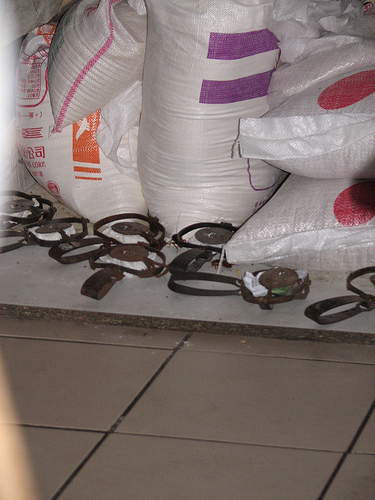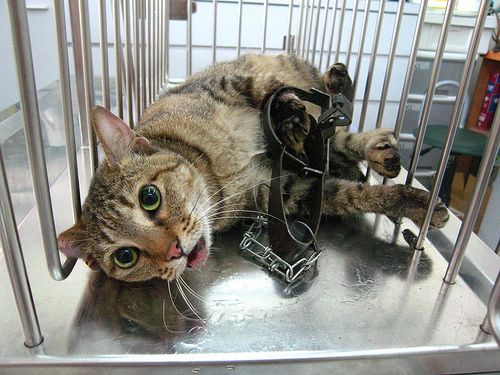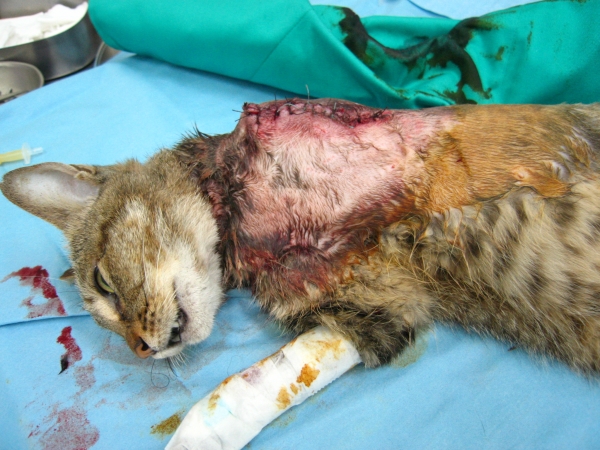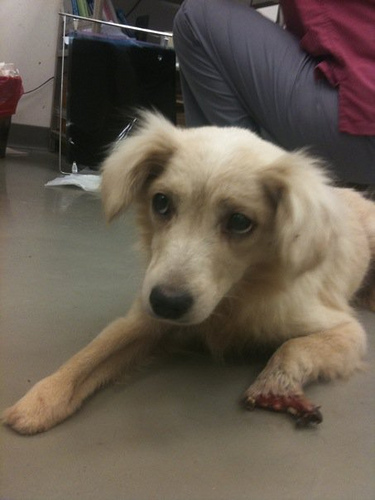

我希望提出目前在台灣有關流浪動物處境的說明,在台灣以鋼製捕獸鋏傷害流浪狗貓的狀況日漸頻繁,而這樣的情況需要國際間動物保護人士以及團體共同關注並予以干預。被捕獸鋏夾住的犬貓,通常需經歷緩慢而痛苦的死亡過程,期間更包括脫水與飢餓的折磨。僥倖獲救的犬、貓則必須面臨截肢的命運。台灣已經變成一個隨處可見三腳貓和三腳狗的地方。根據最近新聞報導在學校、市場、遊憩區、市區街道、住宅區、山區步道、甚至在陽明山國家公園內都發現有捕獸鋏的蹤跡。最新的新聞是在2011年2月在國立台灣大學校園附近發現三隻狗被金屬捕獸鋏夾傷。
任意使用捕獸鋏的結果,也導致許多野生動物例如台灣黑熊和石虎的死傷,嚴重危害台灣野生動物、瀕臨絕種動物的野生物種以及自然環境。 自2008年以來,民眾公開表達呼籲禁用捕獸鋏。2009年,在台灣動物保護團體的壓力之下,政府通過了較為嚴格的條款以起訴違反動保法的民眾。農委會也設立通報專線,民眾可舉發非法只用金屬捕獸鋏案件,同時野增列預算進行民眾教育,印製宣導手冊及海報等。

2009年,台北市政府動保處與關懷生命協會共同拍攝了一部「濫用捕獸鋏,你就觸法!」的宣導短片,並在2010年4月於北台灣公共頻道全面播放。政府與多數五金工會達成協議:民眾必須持有主管機關核准文件,才可購買捕獸鋏。此外,五金行有責任教育購買者,告知使用捕獸鋏的危險性。然而,如此協議並不足以遏止這項危機。如此協議並不足以遏止這項危機,因為台灣有數量龐大的流浪動物,大多苟延殘喘於山坡地、國家公園、濕地及偏遠地區;更何況,幾乎沒有人能夠目擊或指認違法放置捕獸鋏的人。在這座島嶼上,各地的人都有機會聽見誤入陷阱的動物悽慘哀號。過去,透過國際間的活動,包含貴刊物的深度報導,催生了台灣於1998年所訂定之動物保護法。現在,我希望《動物與人》(ANIMAL PEOPLE)雜誌能再度為捕獸鋏的議題發聲;針對捕獸鋏相關的抗議或譴責聲明信件可寄至台灣農委會信箱:10014台灣台北市中正區南海路37號。


房曼琪
聖大非,新墨西州
--------------------------------------
主編的話:
2010年1月,在台北周圍的山區,我親眼看見狗、貓及野生動物被鋼製捕獸鋏困住的證據;使用鋼製捕獸鋏是違法的行為,但卻非常氾濫。自1977年至1989年,我自願擔任魁北克一名禁獵區副管理員的助手,每一年的冬季期間,我每週都要徒步走過大約五十英哩的距離,仔細檢查毛皮動物(其毛皮具有經濟價值)的原始棲息地,移除禁獵區內所有的捕獸鋏和羅網線圈等陷阱。由於擔任這項職務,我看過的陷阱數量比大部份裝設陷阱的人看過的還要多;我發現:鋼製捕獸鋏和羅網陷阱相當殘忍,而且,殘忍的程度遠比反陷阱、反皮草運動人士所呈現出的資料還要嚴重。
現在,台灣的鋼製捕獸鋏數量似乎比魁北克當年還要多(當時用陷阱捕捉動物、製成皮草,可牟取暴利)。在台灣,會裝設陷阱的人通常只佔總人口的一小部份,但那些人大多好鬥、有權勢,出於迷信以及對動物不理性的恐懼與懷恨而有如此作為。雖然那些人常以「保護農作物」為由來合理化設置捕獸鋏的行為,但是,許多捕獸鋏設置的地點周圍完全沒有農作物;而且,經過指認之後發現:很多裝設捕獸鋏的人根本不務農。
麥力特‧克里夫頓(Merritt Clifton)
《動物與人》(ANIMAL PEOPLE)雜誌編輯
網頁:www.animalpeoplenews.org
原文
I would like to report the growing practice of catching homeless dogs with steel jaw leghold traps in Taiwan. The situation needs concerted international intervention. Dog and cats caught by these traps often die slowly and painfully from dehydration and starvation. Those who are rescued often must have injured legs amputated. Taiwan has become a land of three-legged dogs and cats.Recent news reports document that steel jaw leghold traps have been found near schools, in markets, resorts, urban streets, and residential areas, along mountain trails, and in Yang Ming Shan National Park. Among the recent incidents, three dogs were injured in February 2011 by leghold traps set near the Taiwan National University.
Indiscriminate use of leghold traps has also injured Formosan black bears and the small native cats called leopard cats, among other rare and endangered Taiwanese wildlife. Public protest against the use of steel jaw leghold traps began in 2008. Pressured by animal welfare groups, the government in 2009 increased the penalty for illegal trapping. The Council of Agriculture has set up a hotline for people to report illegal use of metal traps and has funded humane education. At the present time, the Council of Agriculture is printing brochures and posters as well as sponsoring public events.
In 2009 the Taipei city government and Life Conservation Association co-produced a video called The Unlawful Use of Leg Hold Traps. In April 2010 it was broadcast in rapid transit stations of northern Taiwan and on public channels. The government and the Hardware Association agreed that permits and registration are now required to purchase leghold traps. In addition, stores must educate buyers about the danger of using the traps. But this is not enough to stop the crisis. Taiwan has homeless animals all over the island, and it is almost impossible to trace the trappers.
Through international campaigns, including your in-depth reporting, the Taiwan government finally passed an animal protection law back in 1998. I hope ANIMAL PEOPLE will help now to expose the leghold trapping issue. Letters of protest against the use of leghold traps may be sent to the Taiwan Council of Agriculture, 37 Nanhai Road, Taipei, Taiwan 10014, Republic of China,
Mira Fong
Santa Fe, New Mexico
Editor's note:
In January 2010 I saw for myself the evidence of illegal but extensive leghold trapping to catch dogs, cats, and wildlife in the mountains surrounding Taipei. From 1977 to 1989, as volunteer assistant to a Quebec deputy game warden, I patrolled about 50 miles per week of prime furbearer habitat on foot throughout each winter, detecting and removing traps and snares from posted land. In this capacity, seeing more of trapping than most trappers, I saw that leghold trapping and snaring are cruelties which are actually understated by much anti-trapping and anti-fur literature. Currently there appears to be more leghold trapping in Taiwan than in Quebec back then, at the height of trapped fur prices.
The trapping in Taiwan is done out of a superstitious and irrational fear and hatred of animals among a tiny but aggressive and influential minority of the human population. Though the trapping is rationalized in the name of protecting agriculture, much goes on far from any crops, and many of the trappers, when identified, have no involvement in farming.
Merritt Clifton
Editor, ANIMAL PEOPLE
www.animalpeoplenews.org